 It really feels like fall here in Canada. We've got that rainy, wet leafy vibe going on. But I love that. Maybe I'm a knitwear designer because I love fall so much? Check out my new work here. I'm excited about the triangle mittlets and scarves. They will be up on my big cartel storefront soon. I've also had some requests for manuals and it seems like a fine time to just start offering my Dubied manuals as photocopied bound books to those interested. You can go here for that.
2 Comments
 I have some fun posters to share. Poster design for proprietary magazines and knitting machine model promotion would have been very important in the 1930's to 1960's. It appears a number of these are from 1954. The graphics in these posters are sometimes fabulous and sometimes halarious. I love the Dubied mascot, the lady dreaming of machines, random cats and babies ....and of course, the world tipping its hat to Dubied. In other news, I just received a gauge 7 Dubied intarsia machine. I am busy cleaning that and finalizing my fall catalogue. Hi there,
I wanted to post some great old photos I have of the Dubied and Santagostino factory. In addition there are some knit manufacturing facilities in and around Paris. I just love browsing museum and material culture websites for images of working class and factory settings. Enjoy!  Hi there, Just a quick note that I've done a website update here to show my summer collection. I spent alot of time sampling for this one doing eylets, stripes and tuck stitches. I'm really happy with the way its all come together. One the technical side I've had more inquiries about the details of knitting machine models and functionality so I'm working on some more posts to address that. I hope everyone is having a lovely summer! I picked up some Japanese machine knitting magazines as part of my ongoing research for collections and new technique ideas. Some of these are so fun and inspiring so I felt like sharing. There's a curious Victoriana feel going on in a late 60's/ early 70's kind of way. I love the subtle tailoring and the texture transitions. These magazines came with a front section of 30-40 styles shot in a fashion magazine format, followed by patterns in the back complete with diagrams and measurements. There are knitted bellbottoms, cropped intarsia tanks and all sorts of craziness. All I know is: I want that cape!
Hi there, I've been machine hunting again and picked up a Cabo gauge 12 hand flat:) I found this beauty in Laval, Quebec and it was quite the drive. The owner was retiring and she spoke almost all Italian (as the machine and herself were originally from there), so the language barrier created an interesting exchange. Luckily her daughter helped translate. She had some fantastic samples on hand with just the tiniest of stitches and some beautiful racked details. She seemed really sad to see it go but so glad too to see the machine go to someone with the knowledge base to use it. The Cabo is not as complex as the Dubieds (it has no tuck cams), but it does create very fine fabrics using rib and tube cams. I am really excited to start some new accessory work on this machine and explore its capabilities ....and since I have never seen this brand before (but it is clearly made with high quality materials so the Cabo manufacturing business must have been a good one) I am sure there are others with this machine. I would love to hear from you!  This gauge 12 takes 2/48nm- 2/60nm yarns so those might be classified as lace weight to cobweb weight yarns. Places like Colourmart in the UK have some lovely cashmere and linen blends as well as cotton linen blends so I'll be starting with that:) Also, I know its short notice but I will be here tomorrow (Sunday April 27th) to talk about and show my vintage machine knitting magazines. Pulling Strings is a great new event series here in Hamilton (Ontario, Canada) aimed at making textiles related subjects and knowledge more accessible to the community. I will also be busting out my machine manuals for anyone interested! Recently I've have alot of questions through my contacts page about sourcing Dubied machines...as well as fairly detailed questions about technique and broader views on the knitting industry. While I do like helping, answering all of these emails during production time is not really practical. Thus this post is aimed to provide some of those answers.
I love these machines. Where can I get one? You can search Ebay, Kijiji and Craigslist for used machines. If you are searching for parts try Jerry Douglas in Hawick, Scotland at this email. So far he has been able to supply fairly esoteric yet high quality needles and accessories. He also occasionally has machines available and will ship internationally. Or contact KMS Kuba (Instanbul) or Tortex (England) for current stock. There is no North American dealer or shop to buy these machines. IMS in Montreal supplies computerized machines but no hand flats. Another avenue to try is Wotol and Exapro. You just have to search...and restore. How did you restore your machines? I learned from my Dad, who is a clockmaker. You clean off the dirt, wash with gasoline, remove any burrs, oil it, make sure all needles are not broken or bent and try it out. If there are further issues you will need to disassemble the machine. When creating knitwear what techniques do you use ? Fully fashioned and linked by hand or cut and sew or a other techniques? And why do you use this technique in particular? I use all of the above. Techniques used are predicated on the design and aesthetic but also the speed at which I can make it. So I might create yardage for cut and sew for one design but then use fully fashioned techniques with a hand sewn cast off for another. From a production stand point I also build enjoyment into my process, so techniques which are too frustrating or time consuming are eliminated. I define production enjoyment as building in a certain amount of flexibility and variation. You refer back to a lot of old manuals and magazines on your website, do you feel there isn't a lot of updated resources available for knitwear using older machinery? Yes I think there are old resources for using old machinery. I think generally speaking the last 30+ years has drained the western world of skilled knitwear technicians and workers and that if anything there has been a general lack of demand (because of lack of opportunity) for resources resulting in a sort of knowledge vacuum. Any knowledgeable technicians I have spoken to are over 50 years of age (but I am located in Canada so there may be a regional difference). There are a number of recent general publications on knitwear technology by Black and Spencer but they are more general overviews. I recommend Knit 1's general overview of industrial knitting as a good primer here. It comes in a downloadable format. What are your opinions on the advances in knitwear technology ? I think generally the advances of mass production have been amazing, necessary (historically speaking) and useful. A lot of the advances were in aid of supplying troops during war as well developing medical aids, etc. I also think to cloth people on a mass level, that advances in knitwear technology have been very useful. However I do think people forget the time investment and resource investment required to create a computer file for an advanced knitting machine. There are many adjustments a human can make to tension disks and colour changes that have to be built into a garment file. Software and user interaction versus machine and user interaction can end up defining and directing the look of the garment. Do you see the design craft of knitwear being lost because of technological advances? No. I think historically speaking there will always be people like me that recognize the importance/ usefulness of older technologies. In terms of opportunity and growth I think we are at a special place now where many practitioners are older and alot of work has gone overseas. There is also sharp division between hand flat knitting machine production practices and costs versus industrial computerized production. Hand flat technology for me has a certain production agility to it resulting in smaller batches of product. Within the last year and a half, I have been lucky enough to find a number of Dubied NHF4 knitting machines. These have been well cared for by their previous owners and are built in such a way that they work best when used frequently. However, a deep clean was necessary as well as an overall service to get each machine working tip top. I thought I would share some of my favourite tools, processes and basic schematics to help anyone out there with the same issue. This information is strictly for metal industrial machines and should not be applied to hobby machines that have mixed metal and plastic components. When I picked up my machines, the owners were literally just finishing their last order and they were focused on squeezing just one more knit panel from the machines. Which to me speaks of a great bond built through habit and time. Naturally once I got them to the studio and set them up it was clear that they could do with some oil and a cleaning. My manual suggests a daily maintenance of lint removal and oiling. 'The good working of the machine depends to a great extent on the way in which it is maintained.'The user is cautioned to strictly observe regular maintenance otherwise 'many annoyances' through the wear of cams and needles will occur. Over time a combination of yarn lint, oil and dust: 'wool swarf' can build up in the needle channels preventing the needles from working as well as they could. This was definitely the case with my machines. The intended outcome of a deep clean and service is the smooth running of your machine. To accomplish this you must remove dirt, clean the needles, oil areas of concern and remove burrs or dents in the metal. Here is a list of items recommended for proper cleaning. Gather these first before you start. a large mason or pickle jar with a lid 1 cup pf gasoline or mineral spirits an old toothbrush an old wide paint brush a mallet 1 cup of sewing machine oil an oil dispenser a packet of fine steel wool a old needle with the hook clipped off paper towel or work cloths a list of suppliers for ordering any required spare parts To start your deep clean, you must remove the needle plate from the needle bed. The needle plate on my machine that runs over the needles was seized from lack of oiling and over time the previous user had had to resort to brute force with a mallet and screwdriver to open it up. The screwdrivers edge created metal burrs along the plate and required scouring to smooth the metal over. If yours is not easy to pull out using needlebed hook (picture), then you will have to hit the mallet against the needlebed hook to get it to come out. Once you slide it back to the end of the bed you can take a metal file and run it along the bevelled edge to remove burrs or uneven raised metal chips. Make sure to polish your filed edge with a piece of fine steel wool. Mine was solidly seized so I liberally oiled the top of the needle plate and its underneath as I slid it back. Depending on your strength and fitness, this may be a two person job. Once you have it removed and you have smoothed out your burrs pull out all of your needles. Yup, all of them. You will need to clean out the needle channels and the needles themselves. Then you will have to check your needles hooks to see if they are bent or broken. A telltale sign that the needle channels need cleaning is if the needles rock back and forth in their channel. Gunk builds up at the base of the channel forcing the needle to rock upwards and flex which leads to breakages. Once you have pulled out all of your needles you can place them in an ultrasonic cleaner which quickly removes grit and dirt as well as rust spots. Or you can place about 20 at a time into a large pickle jar with a 1/4 cup of gasoline or mineral spirits and gentle shake the contents for a minute. I find this to be quite effective. The gasoline smell can be quite strong so work in a well ventilated area. The nice thing about this is you can use the 1/4 cup of gasoline until it is very dirty and it still retains its cleaning effectiveness. The gasoline evaporates from the needles are leaving no residue and you can then see if there is rust build up (which you can scour away with wire wool). Some people also mix a small amount of oil with the gasoline or mineral spirits, which also works. I prefer to oil my needles afterwards. To clean the needle bed use an old broken needle with the head and hook clipped off and drag it through each channel or 'trick' to loosen and remove dirt. This takes awhile and requires good light over the needlebed (and some good music). I drag the broken needle, wipe the residue on a paper towel and then move to the next one. I then use an old paint brush to sweep away stray oil and gunk. Q-tips are also useful here but will not fit into the needle channels. Really dirty needle channels benefit from gasoline applied vigorously with a large hard brush or toothbrush to loosen the oily gunk. The manual also calls for the removal of the plush velvety band that lies at the top of the above image. Wash this plush band with soapy water and let dry. Mine are very ugly but they seem to work. In putting everything back, you need to oil, oil and oil again. The needles need each hook oiling with an oily rag. The tricks or channels need light oiling. The needle bed also needs oiling so that the carriage and cams can slide over it. And finally the needle plate needs plenty of oil.
The curious thing about these old machines is that they really benefit from use. Regular maintenance and usage keeps them humming along happily for many years. In Part 2, I will talk about the carriage and how to maintain the cams.  Hi there. Happy New Years! I'm kicking off the New Year with a knitting technique share. I had heard of knit-weave (the three images below) but not of embroidery knitting. Embroidery knitting is defined as contrast thread woven into the knitted yardage vertically rather than horizontally as in knit-weave. See how a card is used to hold the contrast yarn? See further below for some great pattern designs and the pages that show how to wrap and manipulate the vertical card weaving. I can see using this for accessories and jewellery as well along edges of garments. This was found in an Empisal pattern book from the 1950's. I've also got some new work in my store here. You can enter 10OFF during january for a 10% discount. Another new development is my studio wiki page and a knitting wiki update. I decided that it is better to organize technical information in one place to benefit users. I also wanted to say thank you to blog readers, customers and store owners for supporting my work. It has been a fantastic year for me and it is only possible because of your support!  Tomorrow and Saturday I'll be at Craftmart, a nicely curated show here in Hamilton, Ontario that co-oincides with Artcrawl. In case you aren't familiar with Hamilton and the bi monthly Artcrawl, James St N is closed to motorized traffic and is transformed into a street fair full of food trucks, installations and pop-up shops. Its kind of fantastic. Craftmart is at The Inc at the intersection of James and Cannon St's and it features vendors such as Krystal Speck, Heidi Van Veen, Nightjar Books, Lee Meszaros and others. I'm pretty excited about the show and the calibre of work shown by my co-vendors. In other news, I've managed to get hold of some more vintage Estate magazines. I'll be blogging about them shortly as well as posting more double bed pattern diagrams. As well, I can't say its for sure but there may be some more vintage machines in the near future, these are super fine gauge circular knitting machines that make permutations of tubes. They are meant for making socks but its far more fun to re- appropriate such machines. Here's a great example of machine re-appropriation, although I should say the machines I'm interested in are not this big or modern. Fall so far has been fantastic, the colours, the weather and the cold weather food is something I really look forward to. I hope you are enjoying this season too. |
Anna is a Hamilton based knitwear and textile practitioner blogging about her collection development as well as pre-1950's knitwear technology.
Links
Emma Gerard Make something bookhou Iben Hoej krystalspeck workshop bespoke truckee amy lawrence designs Categories
All
|

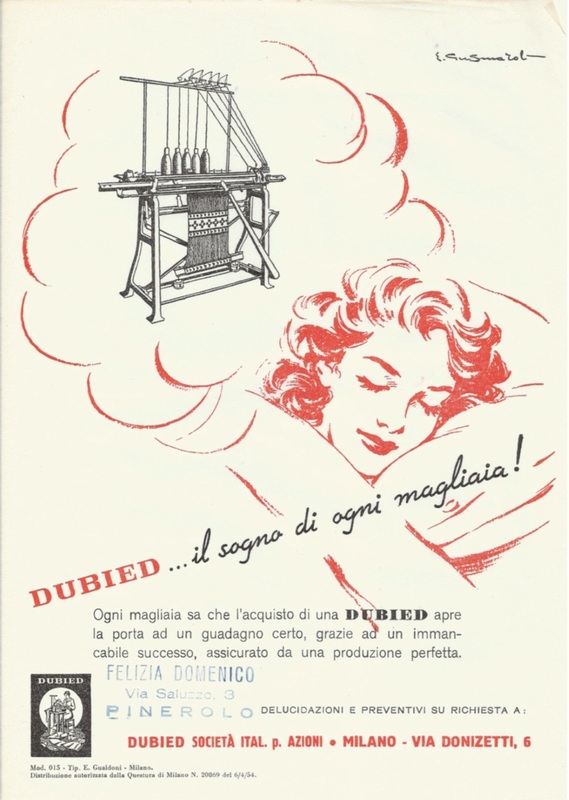
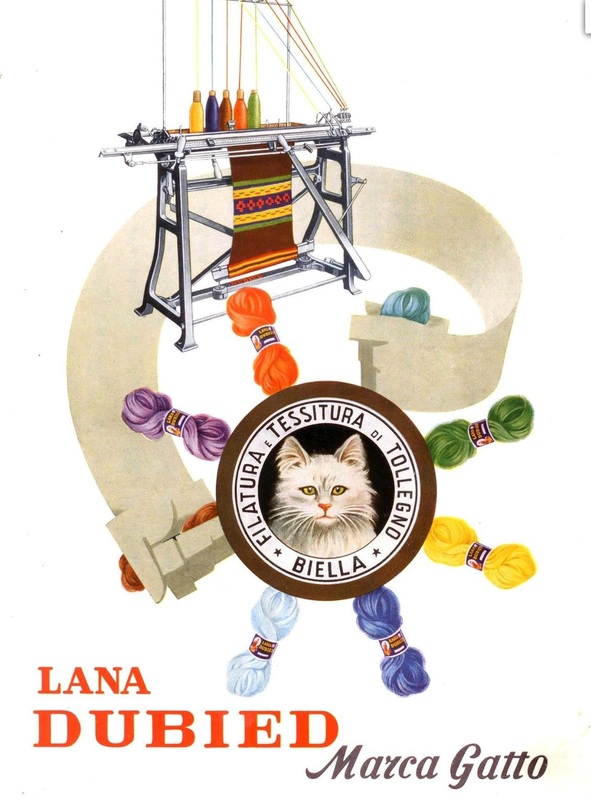












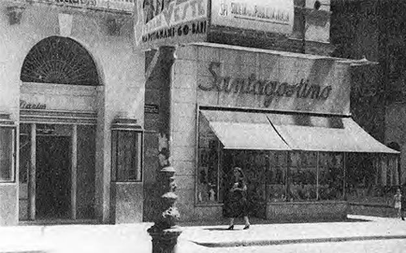
















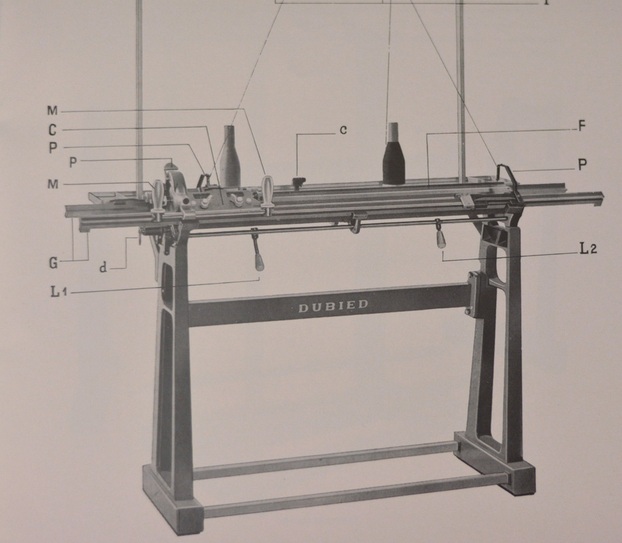



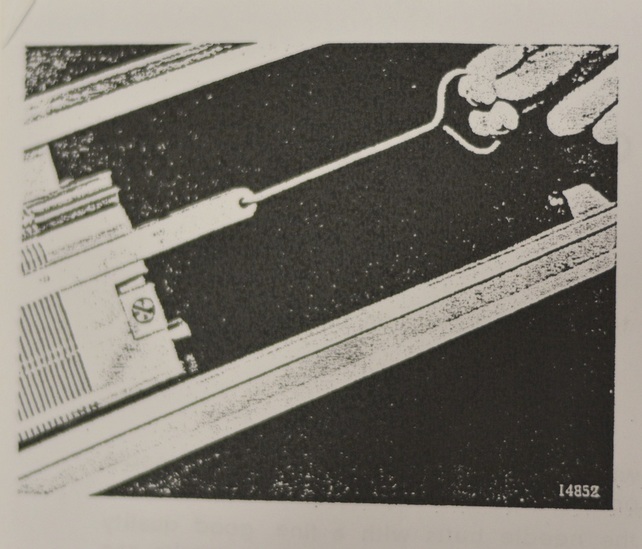




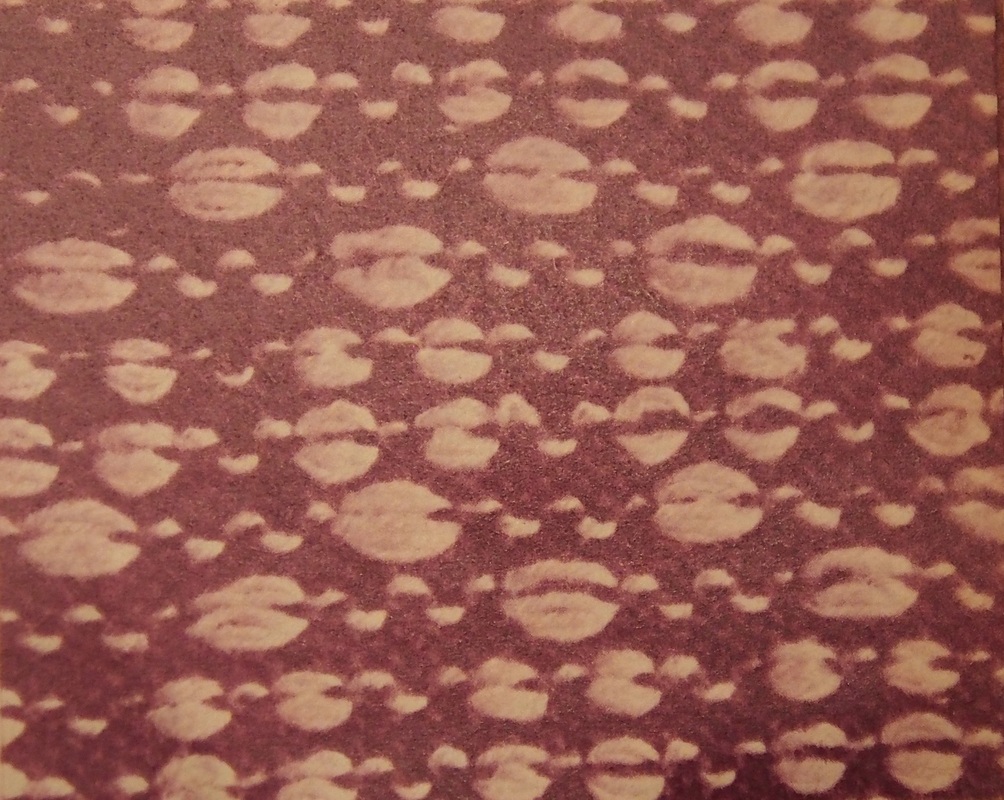








 RSS Feed
RSS Feed